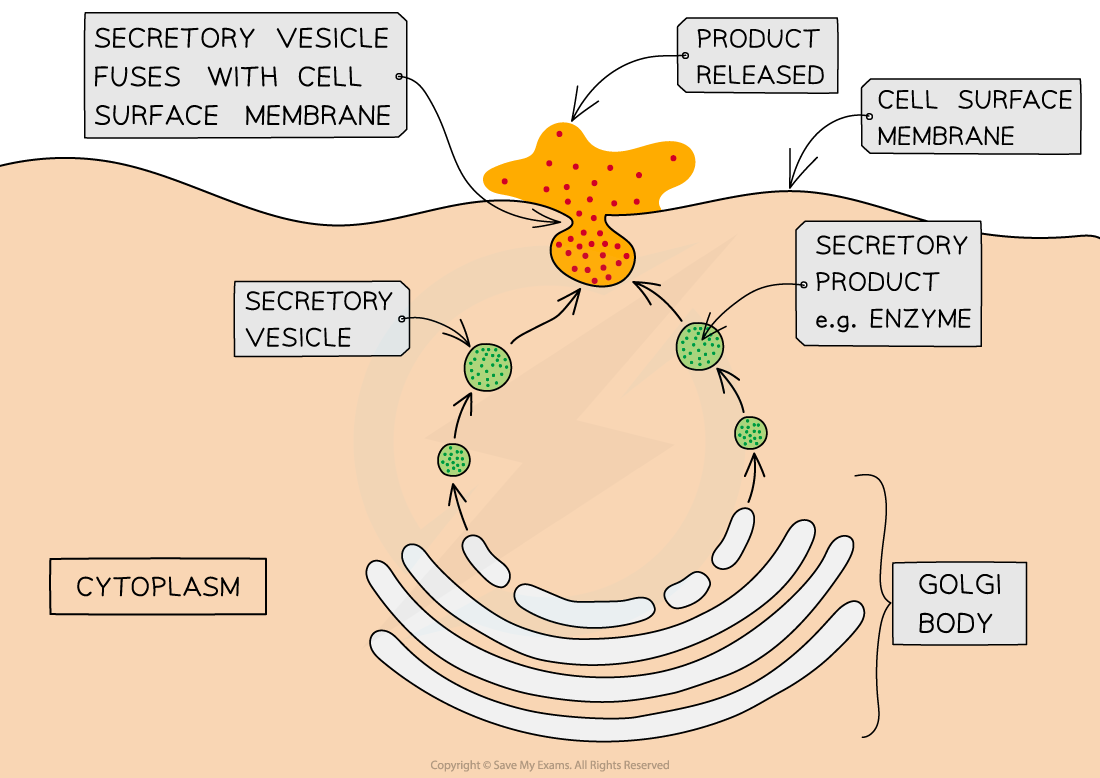Diffusion, Facilitated Diffusion & Active Transport (Edexcel International A Level (IAL) Biology) : Revision Note
Diffusion & Facilitated Diffusion
Diffusion is a type of transport that can occur across a cell membrane
Note that diffusion can also happen within a cellular compartment; the presence of a membrane is not essential
It can be defined as the net movement of a substance from a region of its higher concentration to a region of its lower concentration
Net movement refers to the overall direction of movement; in reality molecules in a liquid or gas move in all directions, but most molecules move from a high to a low concentration
The molecules of a liquid or a gas move randomly due to the kinetic energy of the molecules or ions
The molecules or ions move down a concentration gradient
Diffusion is a passive process meaning that it does not require energy in order to occur
Diffusion can be described as passive transport
Diffusion will continue until the concentration of a substance on each side of a membrane has become equal; this is known as equilibrium
Some molecules are able to diffuse directly between the phospholipids of a membrane; this can be described as simple diffusion
Molecules that can move by simple diffusion tend to be small and non-polar
Small molecules can fit between the phospholipids
Non-polar molecules are able to interact with the non-polar tails of the phospholipids

Diffusion can occur across a cell surface membrane. The image above shows the progression of glucose diffusion; on the left of the diagram there is a steep concentration gradient, and by the end of the process on the right of the diagram the glucose concentration has reached equilibrium
The rate at which a substance diffuses across a membrane depends on several factors
Concentration gradient
Temperature
Surface area
Properties of substance involved
Factors Affecting Diffusion Table

Facilitated diffusion
Some substances cannot diffuse directly through the phospholipid bilayer of cell membranes, e.g.
Large, polar molecules such as glucose and amino acids
Ions such as sodium ions (Na+) and chloride ions (Cl-)
These substances can only cross the phospholipid bilayer with the help of transport proteins; this form of diffusion is known as facilitated diffusion
There are two types of transport protein that enable facilitated diffusion
Channel proteins
Carrier proteins
They are highly specific, meaning that they only allow one type of molecule or ion to pass through
Channel proteins
Channel proteins are pores that extend through the membrane from one side to the other
They allow charged substances, e.g. ions, to diffuse through the cell membrane
The diffusion of these ions does not occur freely; most channel proteins are ‘gated’, meaning that part of the channel protein on the inside surface of the membrane can move in order to close or open the pore
This allows the channel protein to control the exchange of ions

Channel proteins are pores in the cell membrane; they can open and close
Carrier proteins
Unlike channel proteins which have a fixed shape, carrier proteins can switch between two shapes
This causes the binding site of the carrier protein to be open to one side of the membrane first, and then open to the other side of the membrane when the carrier protein switches shape
The direction of movement of molecules diffusing across the membrane depends on their relative concentration on each side of the membrane
Net diffusion of molecules or ions into or out of a cell via carrier proteins will occur down a concentration gradient

Carrier proteins change shape to transport molecules from one side of a membrane to the other
Examiner Tips and Tricks
Remember that the movement of molecules from high concentration to low concentration is diffusion. If this movement requires the aid of a protein, for example because the molecule is charged and cannot pass directly through the phospholipid bilayer, this is facilitated diffusion.
Active Transport
Active transport is the movement of molecules and ions through a cell membrane from a region of lower concentration to a region of higher concentration
Active transport requires energy in the form of ATP from respiration to move substances against their concentration gradient; hence this is an active process
Active transport requires carrier proteins
Each carrier protein is specific to a particular type of molecule or ion
Energy is required to allow the carrier protein to change shape; this transfers the molecules or ions across the cell membrane
The energy required is provided by ATP (adenosine triphosphate) produced during respiration
The ATP is hydrolysed to release energy

Active transport moves substances across a membrane from low to high concentration. Note that ATP is required for carrier proteins to change shape
Examples of active transport include
Reabsorption of useful molecules and ions into the blood after filtration into the kidney tubules
Absorption of some products of digestion from the digestive tract into the blood
Loading sugar from the photosynthesising cells of leaves into the phloem tissue for transport around the plant
Loading inorganic ions from the soil into root hair cells
Examiner Tips and Tricks
Be careful not to get carrier proteins and channel proteins confused when answering questions on active transport. Active transport requires carrier proteins (transmembrane transport proteins that undergo conformational change) not channel proteins.
Endocytosis & Exocytosis
Endocytosis
Some molecules are too large to travel via membrane proteins, e.g.
Proteins
Lipids
Some carbohydrates
In such cases a cell can surround a substance with a section of the cell surface membrane
The membrane engulfs the substance and pinches off inside the cell to form a temporary vacuole with the ingested substance contained inside
This is endocytosis
Phagocytosis is an example of endocytosis
Endocytosis is an active process and requires a source of energy

Phagocytosis is an example of endocytosis; the cell surface membrane extends around a pathogen, engulfing it and enclosing it within a temporary vacuole inside the cell
Exocytosis
Some substances produced by the cell need to be secreted, such as hormones, some enzymes, and lipids
Vesicles containing the substance pinch off from sacs of the Golgi apparatus
These vesicles are moved toward the cell surface and fuse with the cell surface membrane to be released outside the cell
This is exocytosis
Exocytosis is an active process and requires a source of energy

Exocytosis allows the bulk secretion of substances from cells

You've read 0 of your 5 free revision notes this week
Unlock more, it's free!
Did this page help you?
